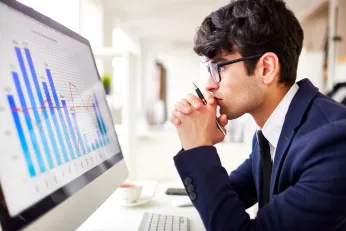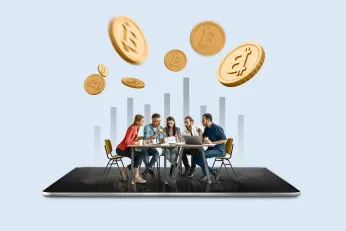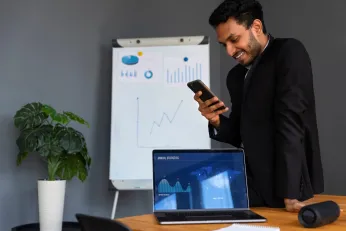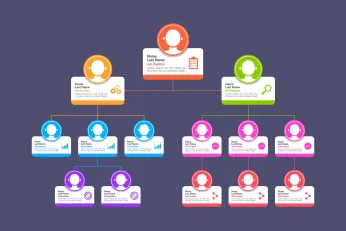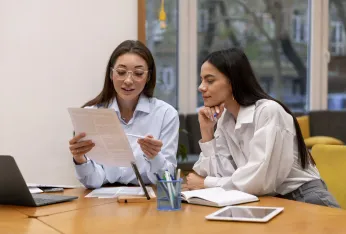12 Sales Gamification Ideas for Teams to Hit Your Business Goals
12 sales gamification ideas that will energize your sales team, and boost motivation. Learn how gamification for sales team helps enhance sales performance.
On this page
Sales can often be a challenging and competitive field, and finding ways to motivate and engage your sales team can significantly impact their performance. One effective approach is to incorporate gamification into your sales processes.
Applying game elements and mechanics to sales activities creates a fun and competitive environment that drives motivation, collaboration, and increased productivity.
This blog will explore 12 sales gamification ideas to help you supercharge your sales team's performance.
12 Creative sales gamification ideas to hit your business goals
Here are 12 sales gamification ideas to improve sales performance and hit your business goals.
1. Leaderboards and competitions
One of the most straightforward and effective ways to introduce gamification into your sales process is through leaderboards and competitions. Create a visual representation of your team's sales performance and display it prominently in your office or on a shared digital platform.
Set clear goals and reward top performers with incentives or recognition. This approach fosters healthy competition, encourages team members to push themselves, and creates a sense of achievement.
2. Badges and rewards
Rewarding achievements with badges or virtual rewards can provide additional motivation for your sales team. Create a system where team members can earn badges or points for completing specific tasks or achieving sales milestones.
These badges can represent various accomplishments, such as closing a high-value deal, reaching a sales target, or demonstrating exceptional teamwork. As team members accumulate badges, they can unlock additional rewards or incentives, fostering a sense of progression and accomplishment.
3. Sales simulations and role-playing
Sales simulations and role-playing exercises offer a valuable opportunity for your team to practice their skills in a safe and controlled environment. Create scenarios that replicate real-life sales situations and assign different roles to team members.
Encourage them to explore different approaches and techniques to overcome objections, handle difficult customers, or negotiate deals. By incorporating an element of competition and providing constructive feedback, you can help your team develop their sales skills while making the learning process engaging and enjoyable.
4. Collaborative challenges
Sales gamification doesn't have to be limited to individual performance. Foster collaboration and teamwork by introducing challenges that require collective effort. For example, set a team target for a specific period and reward everyone when the goal is achieved.
Alternatively, you can create team-based challenges where individuals contribute to a shared goal. This approach not only encourages cooperation but also builds camaraderie among team members, leading to a more positive and supportive work environment.
5. Sales training games
Traditional sales training can often be tedious and uninspiring. Injecting gamification elements into your training programs can make them more engaging and memorable. Develop interactive sales training games that simulate real-world scenarios and provide immediate feedback.
These games can cover various aspects, such as product knowledge, objection handling, or sales techniques. You can increase information retention and application by making the training process enjoyable, leading to more effective sales strategies.
6. Team challenges with real-time updates
Create time-bound challenges that require teams to work together to achieve specific goals. For example, you can set a target for the highest number of sales calls made collectively or the total revenue generated in a given period. Provide real-time updates and progress tracking, so teams can see how they're performing compared to others. This encourages healthy competition, motivates teamwork, and adds excitement to daily sales activities.
7. Sales bingo
Create a sales bingo card with different sales-related tasks or achievements in each square. The tasks can include activities like closing a deal within a certain timeframe, upselling a particular product, or securing a meeting with a key prospect.
As team members complete the tasks, they mark off the corresponding squares. The first person to complete a line or the entire card wins a prize. Sales bingo adds an element of surprise and encourages reps to diversify their sales efforts.
8. Gamified sales training quizzes
Transform sales training into an interactive and competitive experience by incorporating gamified quizzes. Use a learning management system or a quiz platform to create engaging quizzes related to product knowledge, sales techniques, or industry trends.
Include a sales leaderboard to display top performers and reward those who consistently demonstrate strong knowledge and skills. This approach encourages continuous learning and helps reinforce important information.
9. Fantasy sales league
Inspired by fantasy sports leagues, create a fantasy sales league where participants build virtual teams using real sales reps. Assign point values to different sales metrics, such as revenue generated, deals closed, or new leads generated.
Participants earn points based on their chosen reps' performance in real-life. This gamification concept encourages participants to analyze sales data, strategize, and select high-performing reps to maximize their virtual team's success.
10. Sales escape room
Organize a sales-themed escape room challenge for your team. Create a scenario where team members must work together to solve puzzles, find clues, and unlock sales-related challenges within a time limit. Incorporate sales scenarios into the puzzles, such as negotiating with a difficult prospect or identifying upsell opportunities.
The immersive experience encourages teamwork, critical thinking, and problem-solving skills while adding an element of excitement and friendly competition.
11. Sales auction
Transform your sales targets into an exciting auction-style game. Assign each sales target or goal a specific value or point system. As your sales team members achieve their targets, they earn points.
Periodically hold a sales auction where team members can bid on rewards or incentives using the points they've earned. This gamification idea adds a competitive twist while allowing individuals to choose the rewards that motivate them most.
12. Collaborative quests
Create collaborative quests that require team members to work together towards a common objective. Break down larger sales goals into smaller milestones or tasks and assign them to different team members.
Each completed task contributes to the overall quest. As the team completes milestones, they unlock new challenges or rewards. This gamification approach promotes teamwork, encourages knowledge sharing, and builds a sense of unity and shared achievement.
Gamification in sales works best when it aligns with your team's goals and fosters a positive and supportive environment. Be creative, adapt these ideas to suit your team's dynamics, and regularly seek feedback to continuously improve your sales gamification initiatives.
5 Sales gamification strategies to improve sales performance
Your ambitious and competitive sales teams might have team members who mostly love to compete against each other. In contrast, others may like competing against themselves more. But one thing common here is that both these types of team members desire growth.
Sales gamification allows you to motivate both types by providing an external environment to support this behavior. It blends extrinsic (the desire to be better when compared) and intrinsic (the desire to improve your skill-set) motivators in a system of rewards, thereby nudging behavior that supports business objectives.
Sales gamification makes the work fun. This results in more and better work, hence driving performance up. Without the employees directly noticing it, gamification of sales processes changes the engagement rules, and employees change their behavior. It increases sales reps' perceived ability by making difficult tasks simpler through practice or by reducing the activation threshold of targeted behavior to complete that task.
There is no doubt that sales gamification plays an important role in enhancing overall productivity and motivation, but its efficacy in any organization relies on successful implementation.
First, you need to identify steps in your sales process that are crucial in driving the numbers up but are not getting enough attention from the sales reps. These are the key steps you need to build your gamification elements.
Here are 5 effective sales gamification ideas to improve sales performance that will also help you to push your sales numbers up and keep your sales team working together in tandem:
1. Continue to raise the intensity of rewards as the levels go up
Neuroscience says that rewards trigger dopamine release and the same level of rewards over time results in lesser dopamine release due to habituation. The more challenges and higher or unknown rewards you present to your team as the levels progress, the greater the dopamine release. They will hence be more motivated and continue to participate and attempt higher goals.
2. Align rewards with organizational goals
No one is interested in a movie with less drama and no plot. The same goes for your reward system. If you start a competition with little logic, base rewards on scoring high in random activities, and start a gamified competition with no clear vision, you cannot keep the sales teams motivated for too long.
On the other hand, if you create a point-based reward system in alignment with the organization’s larger goals and daily activities, which sales representatives need to do, your sales teams will be chasing the rewards as they will be able to see clearly how winning in the game is also enabling them to tick necessary items in their daily to-do lists.
You may include entering leads data, stages of client meetings, upselling, prospecting, etc., in an increasing reward for completing each step.
3. Encourage self-worth
When gamification enables visual leaderboards to show how employees rank compared to other team members and social media-friendly shareable content on winning a challenge. At the same time, you support the teams by celebrating small wins; the team members' sense of self-worth is amplified. This helps push your already motivated sales teams to achieve the next goal and infuses positive team spirit.
4. Real-time dashboards
The world is increasingly moving towards dynamism. Gone are the days of spreadsheet-based plans, simple graphs, and charts with little to no engagement. Gamified sales dashboards enable your sales representatives to see KPIs, remaining targets, and bonuses in a new light as levels to unlock badges to earn, win tally, or empower their game avatar, etc., thereby improving engagement with the whole sales process.
5. Using sales gamification tools
Haninger’s tip is to measure gamification metrics and results in accurate, automated systems. “You need to use...something that is analyzed automatically,” Haninger said.
Gamification tools aren't just for fun; they’re a way to improve performance and lift conversions while also helping you collect valuable data that you can use to improve your sales and marketing processes in the future. Sales gamification tools can help you better handle your company's sales performance and help you measure gamification metrics like how many people are playing along with your sales contests or how many games were played.
A leading e-commerce company faced challenges in tracking audit team performance across multiple categories, including fraud risk management, procurement, and network security. Reports were created manually, lacked real-time insights, and provided little visibility into individual achievements—leading to low motivation among team members.
To address these issues, the company implemented Compass, a robust sales gamification software, to streamline performance tracking and engagement. The platform introduced real-time dashboards, milestone-based badges, and automated incentive point distribution, giving the audit teams a clear view of their progress and rewards.
The impact was significant: incentive program adoption increased by 80% in just 30 days, while leadership gained a consolidated and graphical view of team performance. The solution also reduced administrative overhead, creating a more efficient and motivated workforce. This case highlights how sales gamification tools can enhance engagement, productivity, and business outcomes across industries.
The case study is evident on how gamification can fast track your sales team towards success.
How to gamify your workplace?
Gamification in the workplace is more than just fun and games; it’s a strategic approach to boost engagement and productivity. Here’s how you can integrate sales gamification and workplace gamification effectively:
1. Set clear goals
Define your objectives before implementing gamification for sales. Align gamification strategy with key business outcomes and ensure transparency so employees understand the purpose and rewards.
2. Establish rules and processes
All sales incentive games and workplace challenges need well-defined rules. Clearly communicate criteria for winning, qualification guidelines, and reward structures to ensure fair competition.
3. Start simple
Introduce easy-to-understand gamification ideas for sales teams to test engagement. Short-term challenges, like “highest weekly sales conversions” or “most client meetings booked,” offer quick wins while fostering motivation.
4. Offer meaningful rewards
Successful team gamification hinges on enticing incentives. A mix of recognition, monetary rewards, and experiential perks can drive participation. Consider sales-specific rewards in gamification programs to encourage skill development.
5. Track and monitor progress
Use dashboards, survey feedback, or sales gamification software like Compass to measure performance. Evaluate whether gamification strategies increase motivation, productivity, and alignment with company goals.
6. Leverage data insights
Modern businesses rely on data, and strategies can generate useful insights. By tracking participation and engagement, you can refine gamification ideas for sales to maximize impact.
7. Keep it fresh
To maintain engagement, evolve your gamification ideas over time. Change difficulty levels, introduce new challenges, or switch up ideas to keep employees motivated.
Integrating sales team gamification into your workplace not only drives performance but also creates a culture of continuous learning and engagement. Start with these gamification ideas for sales teams and watch your workplace productivity soar!
Gamify your sales activities and drive higher revenue growth with Compass
Sales can be tough, but sales gamification makes it engaging, competitive, and rewarding. Compass helps businesses implement gamification for sales to drive motivation, productivity, and revenue growth.

- Run KPI-based sales incentive games – Motivate reps with contests tied to revenue, deals closed, and lead generation.
- Increase quota attainment with real-time tracking – Personalized dashboards, leaderboards, and AI-powered nudges keep reps on track.
- Track and analyze performance – Gain insights into rep productivity, goal tracking, and engagement metrics.
- Reward top performers – Use badges, points, and payout history tracking to recognize achievements.
- Enhance engagement with AI nudges – Automated reminders and performance insights keep reps motivated.
Create minute competitions to drive performance against important KPIs and encourage lasting, positive behaviour changes. Choose between milestones, races, counters, and bingo to influence the right results. Encourage friendly competition with gamification and let sales reps compete on live scorecards and leaderboards. Book a demo to know more!
Conclusion
Implementing sales gamification ideas can have a significant impact on your team's motivation, productivity, and overall performance. By incorporating elements of competition, collaboration, and reward systems, you create an engaging work environment that inspires your sales team to strive for excellence.
Remember to tailor your gamification approach to suit your team's dynamics and objectives. Experiment, gather feedback, and continuously improve your sales gamification initiatives to maximize their effectiveness and drive long-term success for your sales team. Implementing sales training gamification with Compass ensures:
✔ Higher motivation – Sales reps stay engaged with interactive challenges.
✔ Increased productivity – Friendly competition drives more sales activity.
✔ Stronger accountability – Transparent tracking encourages goal achievement.
✔ Better performance insights – Data-driven metrics optimize strategies.
Bring your team to the Compass sales gamification platform and make selling fun with nudge communication and real-time earnings.
Want to know more? Talk to our sales gamification experts.
FAQs
What is sales gamification?
Sales gamification refers to the use of game elements and mechanics in sales processes to motivate and engage sales teams. It involves incorporating elements such as competition, rewards, challenges, and leaderboards to enhance performance and create a fun and competitive environment.
Why should I use sales gamification?
Sales gamification can have several benefits for your team and organization. It boosts motivation and morale, increases productivity and performance, promotes teamwork and collaboration, improves knowledge retention and skill development, and adds an element of fun and excitement to the sales process.
What are some key game elements in sales gamification?
Key game elements used in sales gamification include leaderboards, badges or points systems, competitions, challenges, rewards and incentives, levels or tiers, team collaboration, and interactive training games. These elements drive engagement, competition, and a sense of achievement among sales team members.
Can sales gamification work for remote or distributed sales teams?
Yes, sales gamification can be adapted for remote or distributed sales teams.
- Utilize digital platforms and tools to create virtual leaderboards
- Conduct online competitions, and facilitate collaboration
- Leverage video conferencing and communication channels to provide real-time updates, feedback, and recognition.
The key is to ensure clear communication and accessibility to the gamification elements for all team members, regardless of their location.
Does gamification increase sales?
Yes, gamification has been shown to increase sales. By introducing game elements, competition, and rewards into the sales process, it boosts motivation, productivity, and performance among sales team members, leading to improved sales outcomes.
What is gamification in sales?
Gamification in sales is the application of game-like elements such as points, leaderboards, challenges, and rewards to sales processes. It boosts motivation, engagement, and productivity by making sales activities more interactive and competitive.
What are the 8 core drives of gamification?
The 8 core drives of gamification, based on Yu-kai Chou’s Octalysis framework, are:
- Epic Meaning & Calling – Feeling part of a bigger purpose.
- Development & Accomplishment – Progression and achievement.
- Empowerment of Creativity & Feedback – Opportunities for innovation.
- Ownership & Possession – Desire to accumulate points or rewards.
- Social Influence & Relatedness – Team collaboration and competition.
- Scarcity & Impatience – Limited-time challenges create urgency.
- Unpredictability & Curiosity – Surprise rewards and challenges.
- Loss & Avoidance – Fear of missing out (FOMO) on rewards or status.
What are some of the latest trends in gamification?
- AI-Powered Gamification – Personalized challenges and real-time feedback.
- VR & AR Integration – Immersive sales training and simulations.
- Blockchain Rewards – Secure and transparent incentive programs.
- Real-Time Performance Dashboards – Instant tracking of sales progress.
- Microlearning & Gamified Training – Short, interactive learning modules.
- Social & Collaborative Gamification – Team-based challenges and peer recognition.





